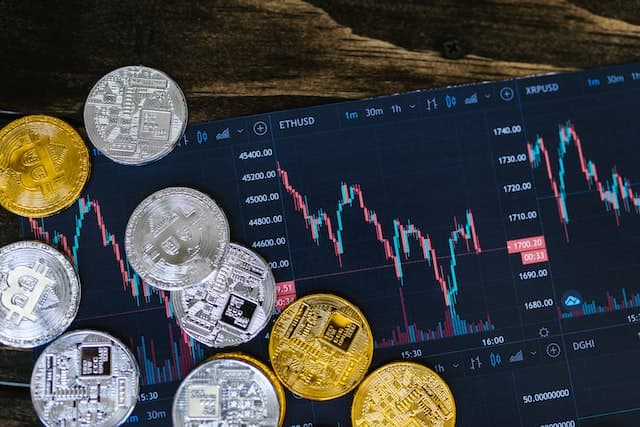Which Lost More — Federal Reserve Notes or Tokens of FTX?
The crypto collapse mirrors the dollar’s decline.

Which would have been a better investment over the last 50 years? Sam Bankman-Fried’s FTX tokens, known as FTT, or the United States dollar issued by the Federal Reserve? Think carefully, and pull out a calculator.
The answer is that they both have lost nearly all their value, shedding 98 percent of their worth in terms of the classical monetary metal, gold. That the implosion of FTTs has been met with sackcloth and ashes and the dollar’s decline by a collective shrug underlines just how far greenbacks have fallen.
The story is not that Mr. Bankman-Fried’s Bahamian Xanadu was built on air, if not outright criminal behavior. It is that whatever vapor was behind his tokens, the Federal Reserve has done no better a job at protecting the value of its notes, a constitutional responsibility assigned to the Congress.
At the FTX token’s peak, on September 9, 2021, each token issued by Mr. Bankman-Fried’s fund had a dollar price of $79.87, that is, the equivalent to about 1/23rd of an ounce of gold. That valuation was what made the crypto magnate a billionaire many times over, and made his fund the 800-pound gorilla of the crypto jungle. He once bragged that he could buy Goldman Sachs.
Extrapolated from listings on CoinMarketCap, the value of an FTX token has plunged to, this week, $1.57, or 1/1109th of an ounce of gold from the 1/23rd of an ounce of gold at which it was valued at its peak. That means it has shed about 98 percent of its value. That drop is a ride that Federal Reserve Notes, as our paper currency is called, have already taken.
In 1971, President Nixon nixed the Bretton Woods agreement, formulated to put the world’s finances on firm footing after the Second World War. By the terms of that accord, America had pledged to redeem dollars presented to it by foreign governments at a 35th of an ounce of gold.
As expediency led President Nixon and, eventually, Congress to untether gold from the dollar, the bottom fell out. Today the value of a dollar is a 1,774th of an ounce of gold. That collapse means that the dollar has lost just about 98 percent of its worth, right on par with the immolation of the FTX tokens. There are now reports that Mr. Bankman-Fried faces extradition back to America.
Lawyer Edwin Vieira Jr., a famed scholar of the constitutional dollar, spoke to the Sun about the fate of crypto currencies and the state of the dollar. The author of “Pieces of Eight: The Monetary Powers and Disabilities of the United States Constitution” opined that like the untethered dollar, crypto is “worse” than an “Alice in Wonderland” currency.
While Mr. Vieira notes that the dollar is at least backed up by the “tax system” and the machinery of government more broadly, cryptocurrency is more like a gambling “chit” than the “manna from heaven” that its adherents fervently proclaim. He asks “who is auditing” the shadowy precincts of crypto’s kingdom?
Mr. Vieira sees cryptocurrency as detached from either a “government system or a market commodity,” and thus liable to both wild fluctuation in value and fraudsters attuned to what he calls the “dark side of the force.”
Defenders of crypto currencies argue that the fact that, say, bitcoins can’t be manufactured — they must be electronically “mined,” and at significant cost — they aren’t nothing. They point to restricted supply and increasing demand, at least in theory. In any event, American prosecutors will determine whether what Mr. Vieira calls “fictional units of account” were used to commit real crimes.
The divorce between the dollar and gold was formalized in 1978, when the Second Amendment of the International Monetary Fund’s articles — which, like all treaties, is part of what the Constitution calls the “supreme law of the land” — barred members from denominating their currencies in gold and removed the requirement that transactions in gold be executed at the mandated price.

